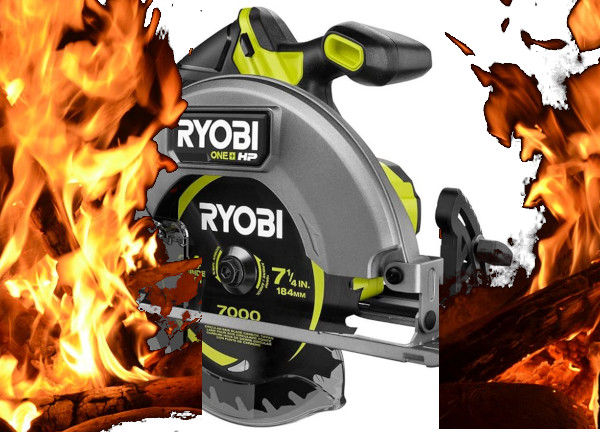Why Is My Circular Saw Burning The Wood?
Author: E. Silva (aka Mr. Awesome - The Niche Specialty Expert)

Stellar question, and what it comes down to is this —- if you notice ( and please tell me that you have, in fact, noticed this … or you may want to pay a little more close attention the next time that you saw, he he he heh heh ) that those cut wood edges start to show some burn marks on them, it’s all due to your blade letting out excessive heat and thus ( for lack of a better word, he he he he heh ) SCORCHING your piece of wood or other cut material. No bueno, of course. And in this read, I am going to show you some causes of the problem as well as other things that you ought to take to heart. Like what you hear? Then please read it all ….
Now, then, first of all, I would like to just mention this to you ( and pray you will pay close attention to my expertise on the matter, too, he he he he heh ) — if your saw blade’s filthy ( or heck, even if it’s just dull or unsharpened ) , then that itself can be the main problem. In such case, culprit found and mystery solved. Now what that means, of course, is this … that your saw lacks pitch, cleanliness or even sharpness, in turn slowing down your feed rate, all the while putting more unneeded friction on your wood piece, and thus causing these scorch marks in the first place. You might also want to note that if you push that main stock right through the saw ( but do so TOO SLOWLY ) , then what you are going to find happening is simply that it’ll cause your saw blade to burn and get hotter. Keep in mind that if your blade feels ‘actually dull’, it might just be dirty instead ; and if you get a hefty build – up of wood pitch resins across your rear of your saw – blade’s teeth, all in all, then what that means is simply that you’ll get both slower cutting speeds and more burning as you cut …. no bueno at all. That’s why they sell commercial blade cleaners in many Home Depot / Ace Hardware type stores, and you should certainly take advantage of these.
Now, then, you should also know for yourself the fact that the feed speed might be wrong, as well, which certainly aids in the overall burning, too. How it works is like this —- in a nut – shell, soft maple woods ( or even others, like cherry woods ) are proven to be far more susceptible to burning. And if you want to avoid burns, you need to feed them in faster. Get practice with different wood types and feed speeds so that you can learn, for yourself, what is most optimal in each and every unique situation.
